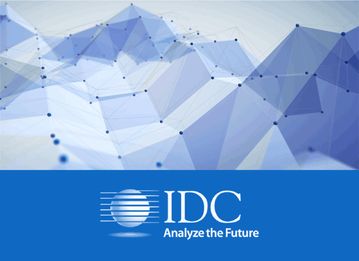By David Senf, Program Vice President, IDC Canada

"... it is not the most intellectual of the species that survives; it is not the strongest that survives; but the species that survives is the one that is able best to adapt and adjust to the changing environment in which it finds itself." Charles Darwin
Canadian organizations compete against local and global players that measure change in hours rather than months. Whether bringing IT systems online faster or enhancing customer and employee applications, in the era of digital transformation — an era being called the 4th industrial revolution — speed of change is paramount. Yet fewer than a third of Canadian organizations have learned and internalized the need to adapt quickly. But those that have are pulling ahead of their peers. In fact, IDC is seeing a digital divide opening up between organizations that "get it" and those that are sitting on the sidelines.
Which Criteria are Important for Hybrid Cloud Decision Making?
Cloud is the top technology that more successful organizations are focused on within their digital transformation (DX) efforts. More importantly, they understand and plan for the significance of hybrid cloud. This is because few organizations have the luxury of being "born in the cloud" and have legacy systems and applications to maintain. Public cloud and private hosted cloud are extensions of their on-premise capabilities. When Canadian organizations consider hybrid cloud, they weigh five key criteria within their decision-making process:
- Security — "Keep my data confidential"
- Data residency — "Keep my data close and on Canadian soil where possible"
- Self-service — "Don't make me jump through hoops to get my data"
- Workload portability — "Don't lock me in. I want to optimize for changes in costs/etc."
- Identity management — "Allow only the right people to access the right data"
How do Hybrid Cloud, Automation, and Better Tools Fit Together?
It's common today when talking about digital transformation and hybrid cloud to bring IT automation and DevOps into the conversation as well — one of the goals being faster reaction time from IT and developer teams (e.g., rolling out/customizing infrastructure and apps to help employees or customers get better access to the data they need). Increasingly, development is happening in the cloud and near the cloud (e.g., from hosted facility) as well as on-premise. Cloud platforms have made it so much easier to create and release new apps. What organizations are realizing is that development isn't what it used to be — and that they can automate a lot of the storage and server provisioning, configuration, and other time-consuming tasks. IDC finds that 3 out of 10 organizations have invested in automation tools and DevOps practices in order to get higher levels of productivity — ultimately to get out in front of DX.
How do You Pick the Right Cloud?
But before your organization wades too deep into the topics of automation and the benefits of DevOps, start with planning your approach to hybrid cloud. For example, assess which data is most valuable (e.g., requires the highest security, fastest recovery time, highest performance, and any sovereignty issues). Do this across your data and application assets to figure out which deployment models (e.g., on-premise, hosted, public cloud) will work out best in each case. It is important to note that it's no longer about one workload staying in one deployment model. Applications and data can be balanced across deployment models when it makes sense. Diversifying a critical workload, for example, across multiple on-premise, hosted, or public cloud options may help derisk downtime if one point fails and can help optimize costs. Data and applications have very different requirements and dependencies that should be considered before migrating them to the cloud. Placing data in a public cloud may start at a lower cost, but extracting it back out may be much more costly. Understand the upload and egress charges you may face. Potentially, consider hosted options that may provide negotiable terms for workload portability and data control.
Many organizations simply subscribe to a cloud service without much planning — and the sky doesn't fall. But those that take a step back to plan their approach see improved end-user satisfaction, deployment times, and even revenue growth (e.g., from being able to make faster IT changes leading to faster business changes and thus revenue opportunism).
All industries are being reshaped by digital transformation. Some organizations won't survive because they don't adapt quickly enough. We already see many organizations falling behind their peers that are proactively determining how they can better serve customers and which employee tasks can be automated. On a side note, what we don't see is a lot of personnel downsizing as IT automation comes into play. Instead organizations are starting to add new tasks and skills to their staff as older manual tasks are diminished. Take this unique opportunity of massive change to pull ahead of your peers by exploring hybrid cloud in a DX context.
Are you interested in transitioning from an on-premises private cloud environment to a hybrid cloud environment that incorporates Data Fabric endpoints? Gain the expertise to design your solution and plan the transition:
About the Author

David Senf is IDC Canada's Program Vice President, Infrastructure Solutions Group. His team forecasts and tracks the markets and competitors in the cloud, servers, storage, networking, security, software tools, and virtualization. He works with vendors, the channel, CIOs and IT professionals to form a complete picture of buying patterns. In the decade prior to joining IDC, he sold, managed and implemented IT consulting initiatives ranging from Web portals to online presence. His accumulated understanding of technology trends from a business strategy and IT "nuts and bolts" perspective enriches his research with both strategic and tactical advice.
Read another blog by David Senf, "Storage: The Digital Transformation Imperative"


